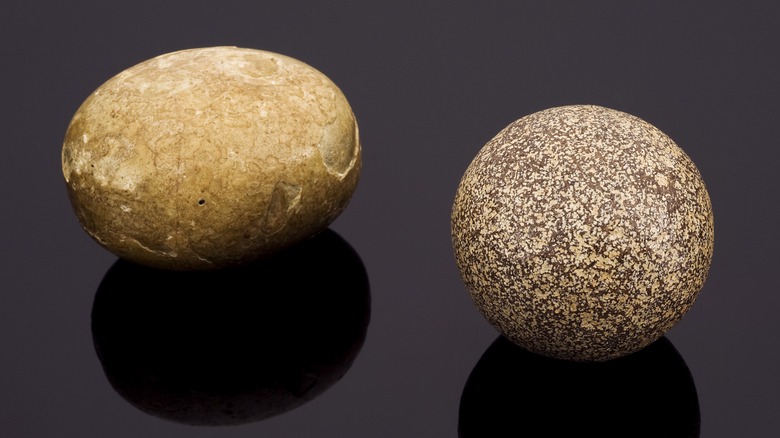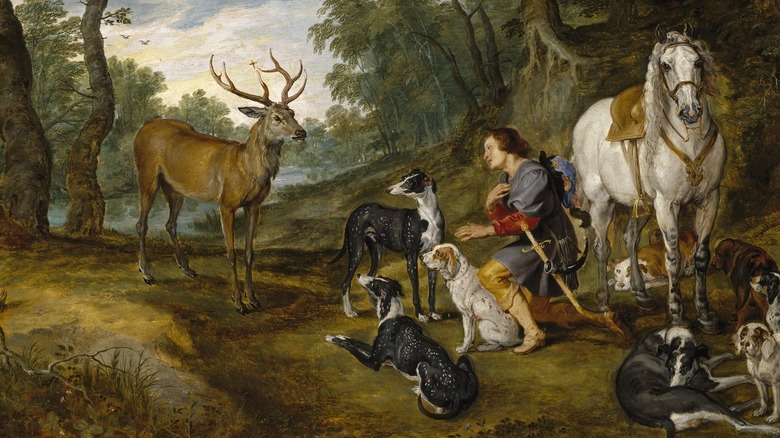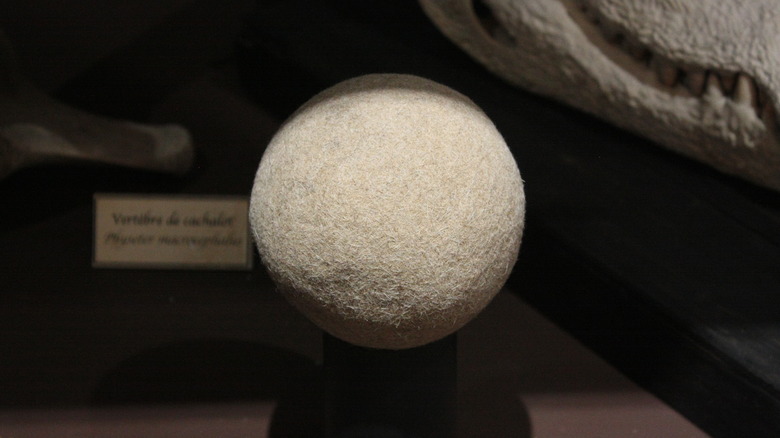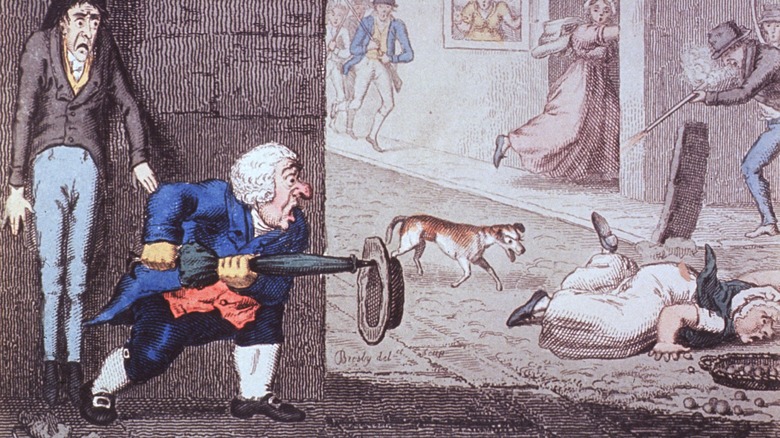The Strange History Of Madstones In Medicine
Many Americans are familiar to some degree with the symptoms of rabies, thanks in part to its prevalence in movies and other media, from "To Kill a Mockingbird" to "Old Yeller" to "Cujo," all of which present the idea of a "mad dog" as a real and dangerous threat. And prior to the development of a vaccine for rabies in the 19th century, rabies was a real threat.
As the Centers for Disease Control and Prevention (CDC) explains, rabies is a vaccine-preventable viral infection most commonly spread through the bite or scratch of an infected animal. According to the CDC, symptoms include flu-like symptoms such as fever and fatigue but eventually progress to include anxiety, confusion, strange behavior, hallucinations, and hydrophobia (fear of water). Once there's a clear display of symptoms, rabies is almost always fatal. And while in the United States today most rabies infections come from wild animals, such as bats or raccoons, before the mid-20th century, the vast majority of rabies infections came from domestic animals like dogs.
As a result, in the years before legitimate medical treatment for the rabies virus emerged, folklore and superstition provided hope for people of the United States — particularly in the Ozarks and other rural areas — in the form of "madstones," also known as bezoars. But what is a madstone, how do you make one, how do you use one, and where did such an idea come from?
Origins and similar objects
Ozarks Public Radio reports the traditional use of madstones goes back at least as far as 13th-century Europe, and the madstone tradition was almost certainly brought to the United States by immigrants from Europe, with the oldest recorded use in America being a family in Virginia who said their stone originated in Scotland.
Artifacts similar to madstones — in purpose if not in form — can certainly be found in European history. According to the Pitt Rivers Museum in Oxford, England, a Saint Hubert's key is a small metal item — often a nail, cone, or cross rather than an actual key — acquired at an abbey or shrine dedicated to Saint Hubert, the patron of ethical hunters, that would be heated until red-hot and then placed directly on the site of a bite wound in order to prevent rabies infection. Otherwise these "keys" might also be hung on the wall as general protection against rabies. Saint Hubert was said to have been given a golden key by Saint Peter himself that gave him the power to drive away the evil spirit of rabies.
HowStuffWorks further explains that bezoars were used for centuries before making their way to America, first by Arabian doctors as far back as the eighth century, who brought them to Europe by the 12th century. They used them not for rabies but for everything from leprosy to depression, but especially as an antidote for poison. By the Renaissance, bezoars were in high demand among the aristocracy and were much more prized even than gold.
How madstones are formed
So what exactly is a madstone? Despite their name, madstones aren't stones in the traditional sense. As the Arkansas Democrat-Gazette explains, madstones are actually enteroliths, which is to say, a mineral concretion formed in the stomach of an animal. These concretions begin as some piece of indigestible matter, such as hair or vegetable fibers, that end up in the stomach, forming a mass over time.
Like an oyster forming a pearl, layer after layer of calcium deposits are applied to the foreign matter, forming a (usually) round, hard object that can range anywhere in size from a gumball to a baseball (or larger, per the Louisville Courier-Journal). And it was these round, hard objects, known as madstones, that people in the 19th century turned to as a cure for rabies.
But how did a madstone get from the guts of an animal to a rabies wound? Well, generally from hunting. While enteroliths can form in all kinds of animals, including farm animals like horses or sheep, the most-prized madstones came from deer, especially white deer, which were thought to have the most potent drawing power of any animal.
Proper use and application
In the 19th century, prior to the development of vaccines by Louis Pasteur in 1885 (per the CDC), people desperately looked to various other remedies to treat ailments like rabies. For some, a madstone — if you could get a hold of one — seemed like a proper treatment. As a medicine, the "stone" would be applied to the infection site of a rabies victim, where it was thought that over time, the stone would leech the "poison" out and heal the affected person.
According to Ozarks Public Radio, when the madstone was needed, it would first be boiled in milk until it got quite hot; then it would be applied to the wound site — normally a rabies-infected bite, but madstones could also be used for snake or spider bites as well — and if the stone stuck to the wound, that was proof that there was indeed infection or poison within.
The stone would be left stuck to the wound until it fell off, which could often be as long as a day or two, at which point it would be placed in hot milk again. If the stone was working properly, the milk would turn green with the "poison," after which the stone would be reapplied to the wound. This process would be repeated until the stone stopped sticking, which was a sure sign that the infection was gone.
Despite the high demand and subsequent value of madstones as a medicine, it was strictly forbidden to buy or sell one, or even to charge for its use. As a result, these stones were typically handed down from generation to generation.



